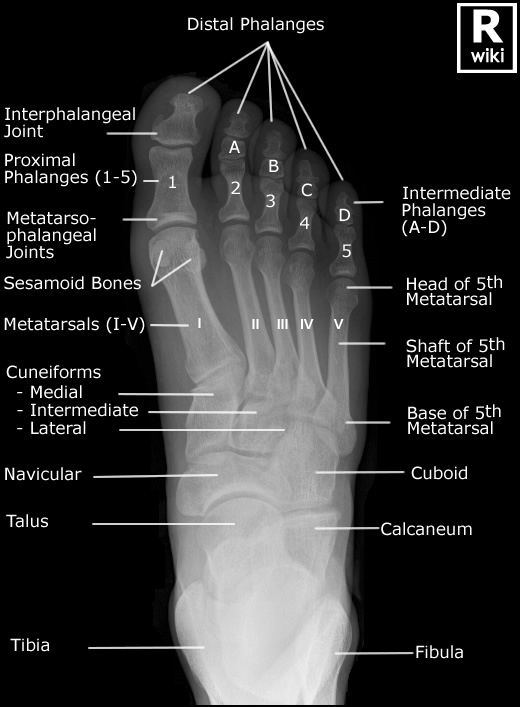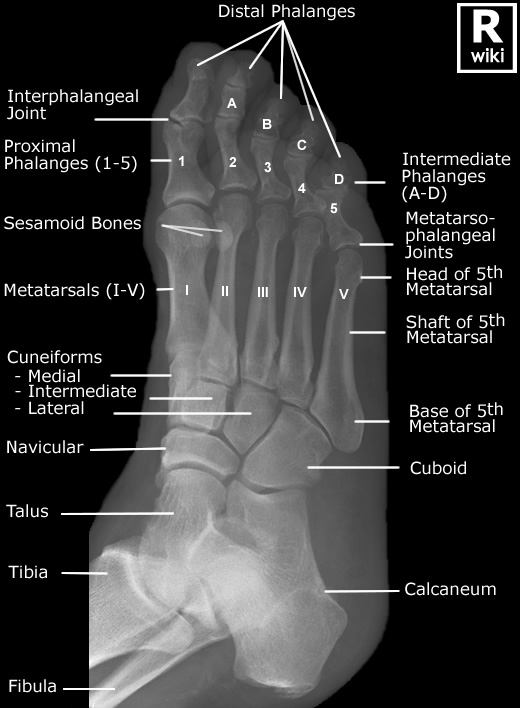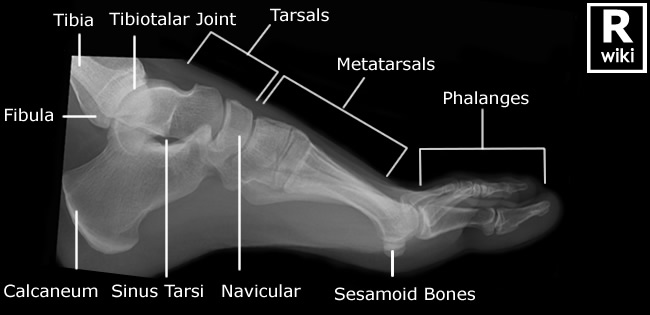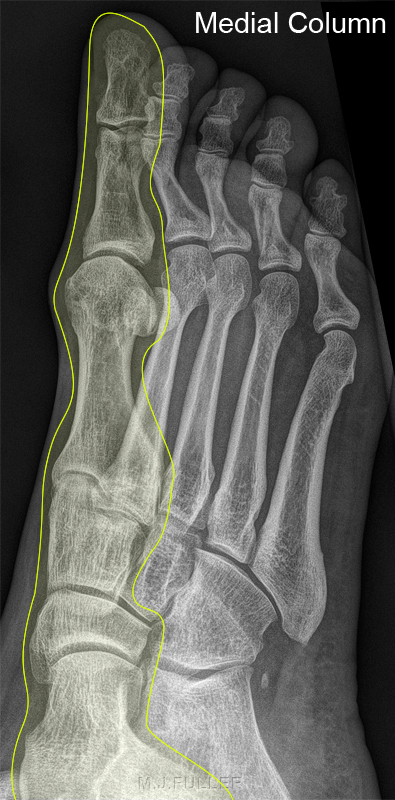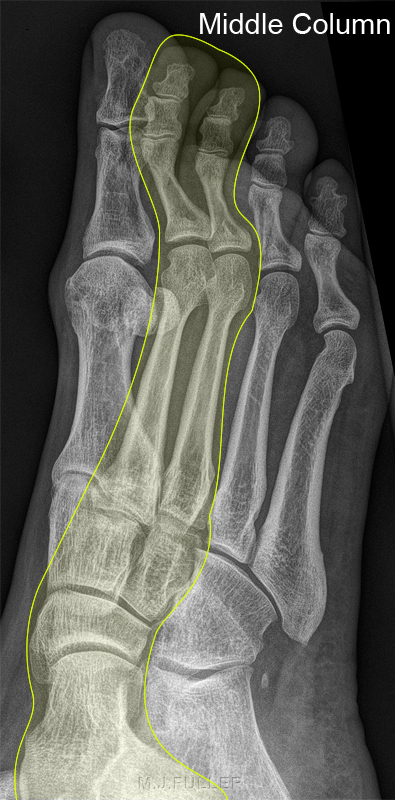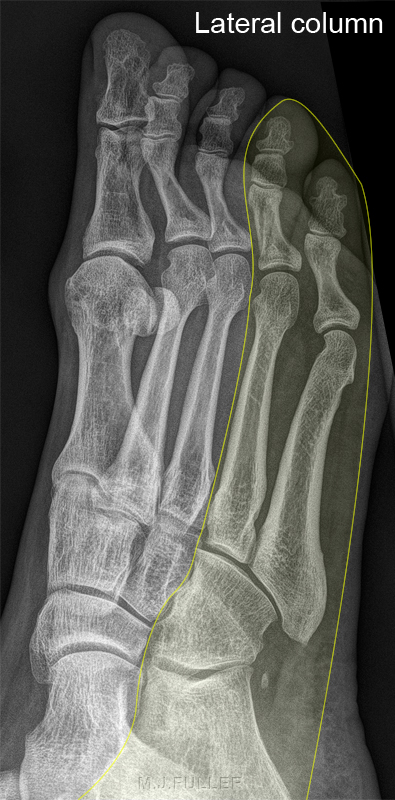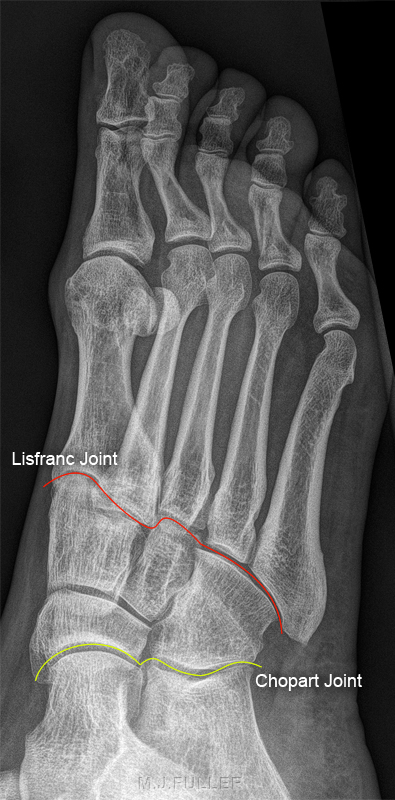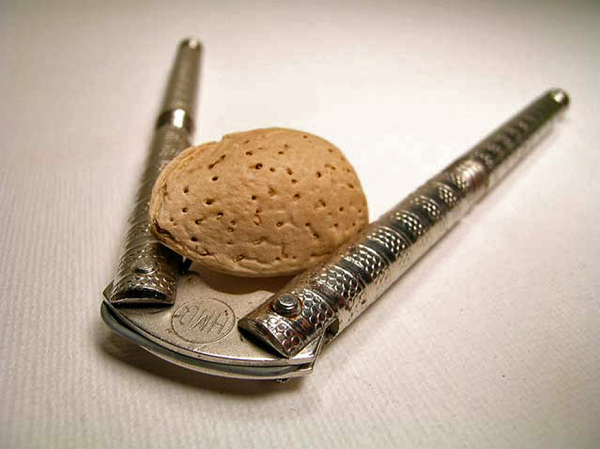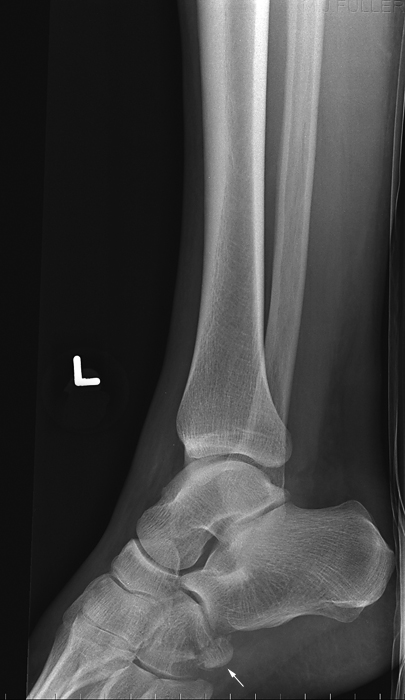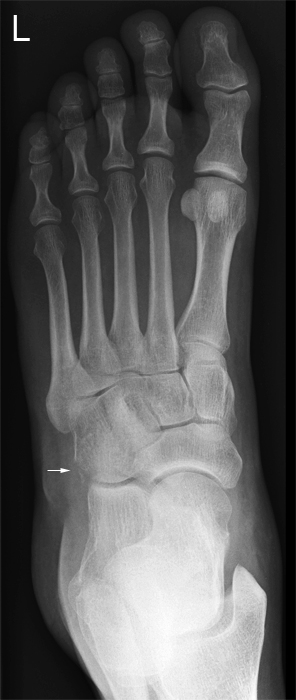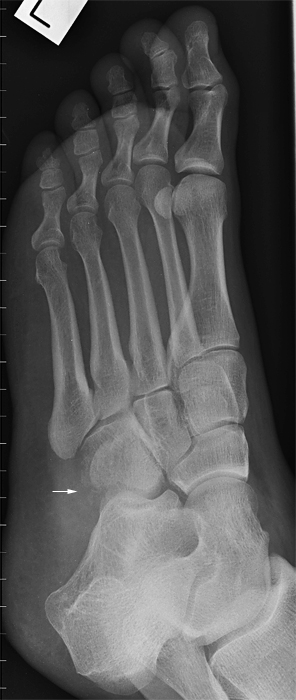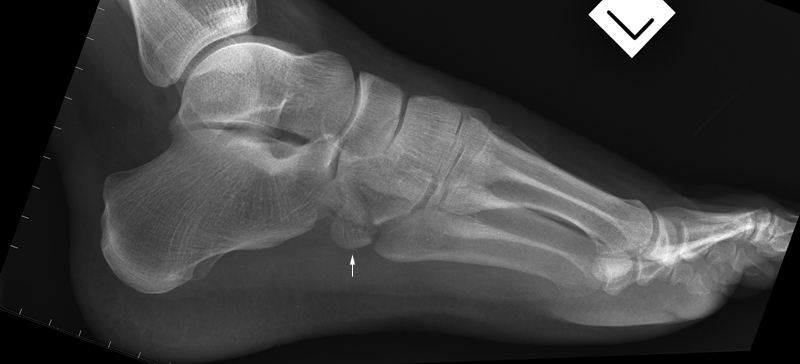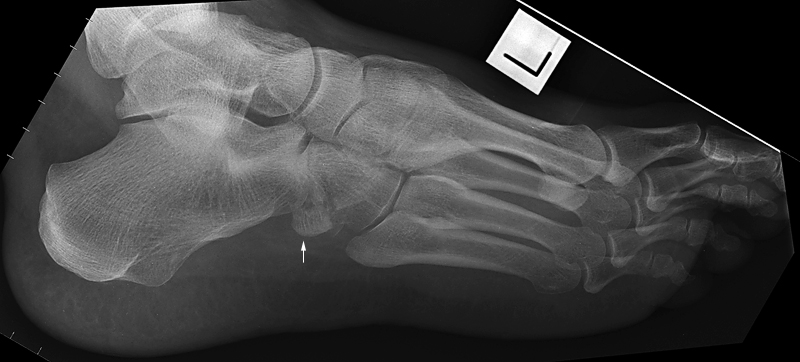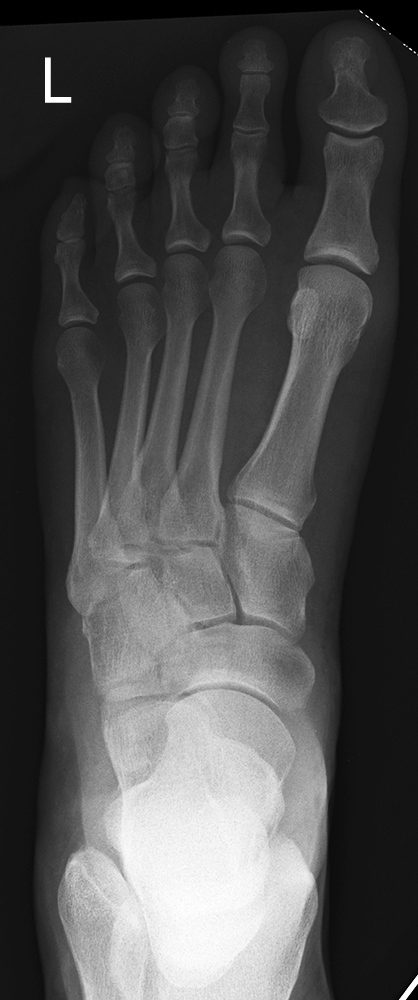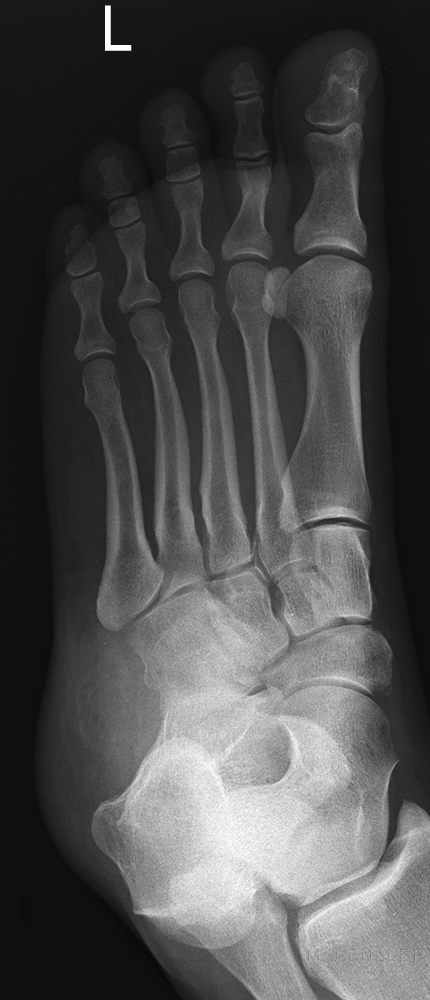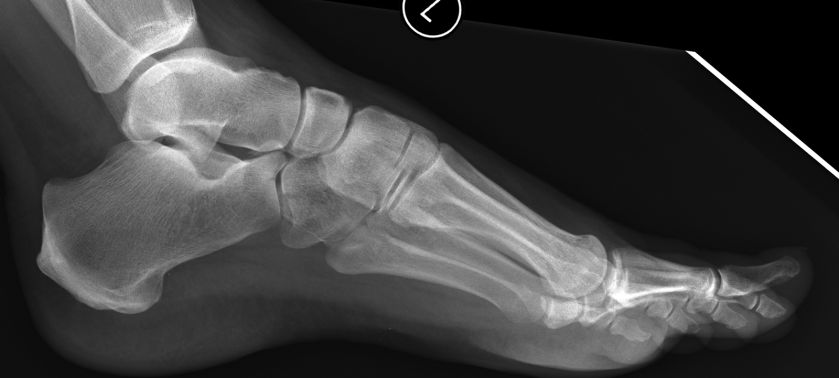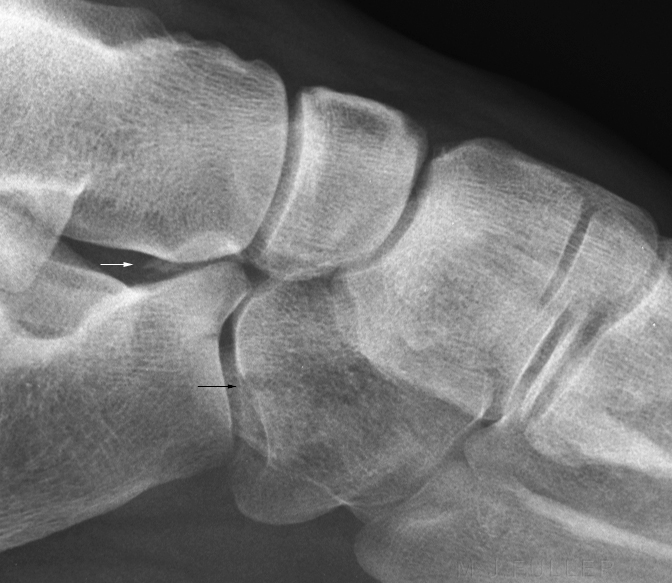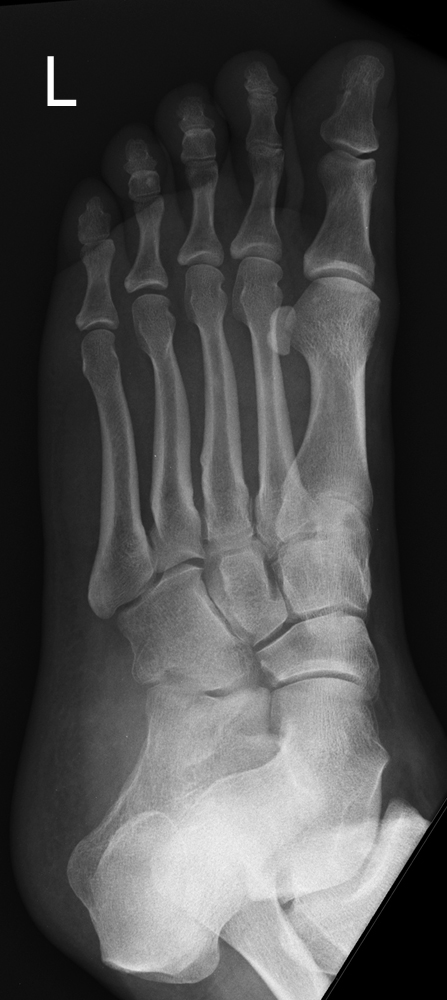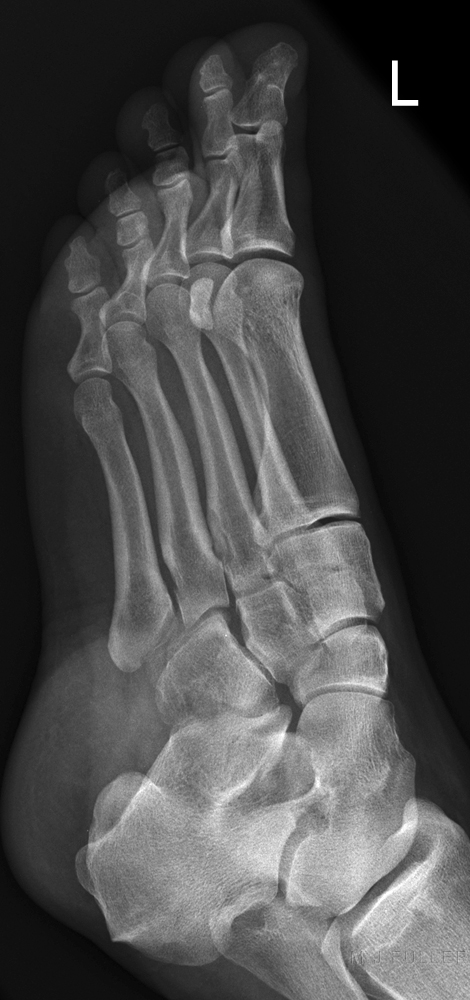Nutcracker Fracture of the Cuboid
A nutcracker fracture of the cuboid is a very uncommon fracture. This page considers all aspects of the radiography of the nutcracker fracture
Acknowledgement
I have drawn extensively from the work of Nicholas Beckmann, MD and Manickam Kumaravel, MD (The Department of Diagnostic and Interventional Imaging, The University of Texas Medical School). Their presentation <a class="external" href="http://www.uth.tmc.edu/radiology/presentations/2008/nutcracker_beckman_2008.pdf" rel="nofollow" target="_blank">Nuts and Bolts of the Nutcracker</a> is recommended for further reading.
Anatomy
The Columns of the Foot
Midfoot Articlations
Midfoot articulations with forefoot and hind foot •Lisfranc joint (forefoot articulation, red line)
•Chopart joint (hind foot articulation, yellow line)
What is a nutcracker Fracture?
Nicholas Beckmann, MD and Manickam Kumaravel, MD <a class="external" href="http://www.uth.tmc.edu/radiology/presentations/2008/nutcracker_beckman_2008.pdf" rel="nofollow" target="_blank">Nuts and Bolts of the Nutcracker</a> . http://www.uth.tmc.edu/radiology/presentations/2008/nutcracker_beckman_2008.pdf
- the nutcracker fracture derives its name from the action of a nutcracker which can open a nut by cracking the shell by compressing it between the two handles (see nutcracker left)
•Most cuboid fractures are caused by compression of the cuboid between the calcaneus and the lateral metatarsals during force abduction
•The mechanism similar to cracking a nut, hence called “nutcracker fractures”
Nutcracker Fractures
Case 1
This 50 year old male presented to the Emergency Department following a fall from a ladder. On landing his foot became stuck. He was referred for ankle radiography initially then re-referred for foot radiography.
The lateral projection of the ankle demonstrates a fracture of the cuboid (arrowed).
Case 2
